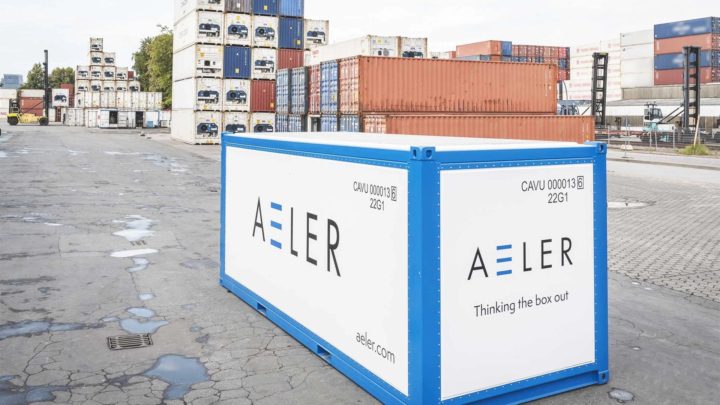
In autumn last year, Lausanne-based start-up Aeler officially launched its new generation container, Unit One, following an initial funding round of CHF7.5 million. More than 80 Unit One containers are already in use on global container trades and the company believes it can now see rapid growth in 2023.
Co-founder David Baur has long been convinced of the potential to revolutionise standard steel containers. In his Master’s project at the Swiss Federal Institute of Technology’s Laboratory for Processing of Advanced Composites, Baur began developing and testing a framework made of glass fibre-reinforced composites.
In particular, Baur saw that the standard ISO container, which has remained essentially unchanged for decades, gains its structural integrity from its frame rather than the corrugated side walls. However, this corrugation reduces the available space for cargo. It might be marginal, but in freight shipping every cubic centimetre counts.
Instead, Baur focused on the inherent strength of composite material to provide resilience to the container walls. And, because the walls of the Unit One are flat, there is more cargo space within the box.
More payload
As an example, Aeler states that a flexitank in a standard 20ft container can carry the equivalent of 32,000 bottles of liquid, whereas the Unit One can safely ship up to 37,300 equivalent bottles.
To put it another way, the suggested maximum payload guideline for flexitanks in standard containers is 24 tonnes, while a Unit One can safely load close to 28 tonnes – a 17 percent increase – thanks to its stronger side walls. All this means fewer CO2 emissions per litre shipped over a given distance.
But Aeler also points to other benefits of the Unit One, including increased safety.
Many shippers and forwarders the company has spoken with said they had issues with transporting flexitanks, notably bulging of the container side walls being the top concern.
Bulging happens because the liquid inside a flexitank moves freely and this sloshing movement can create severe hydrodynamic forces on the side walls. Bulging also makes it more difficult, or even impossible, to load or discharge a container.
Moreover, container vessels are designed to pack the boxes tightly against one another. So, during handling operations, a bulge may catch, or be caught by, another container, cutting into its side and leading to cargo loss and equipment damage.
And importantly, rail operators will likely not take the risk of carrying a bulged container and so will refuse onward carriage.
Smooth sides
A standard container also needs extra fittings, mainly to avoid tearing or puncturing the flexitank. These entail additional costs in time and money, and are rarely re-usable.
But Aeler says this is a key difference with the Unit One as the inner sides are smooth so there is no need to ‘dress’ the container.
Better insulation is a further benefit as the Unit One nullifies the big variations in internal and external temperatures. Thanks to the composite walls’ insulative properties, the container acts more like an unplugged reefer unit, but without the major cost of refrigeration genset and extra space.
Connectivity
Being a completely new design, Aeler says the Unit One can more easily leverage technology solutions. With the rise of ‘logtech’, Aeler wanted to open the Unit One containers to new possibilities for connectivity, automation and security.
Instead of attaching sensors and other telematics devices to a standard ISO container these devices are embedded in the Unit One to let operators see exactly what is going on inside the container.
The system’s artificial intelligence (AI) programs can make sense out of large amounts of data so that expeditors can make faster, better-informed decisions about optimal routes planning, etc. This brings cost savings as well as environmental benefits. Aeler’s system also includes an application for tracking input from the embedded sensors as well as a fleet-management program.
Unit One is offered in conjunction with Aeler’s Container As A Service (CAAS) which gives customers simple, flexible and worry-free access, even for short periods of time or one-way trips.
Customers just pick up their containers at an Aeler depot, use and track them via the company’s Control Tower platform. When finished, they simply return them to an Aeler depot, and the company takes care of the rest.